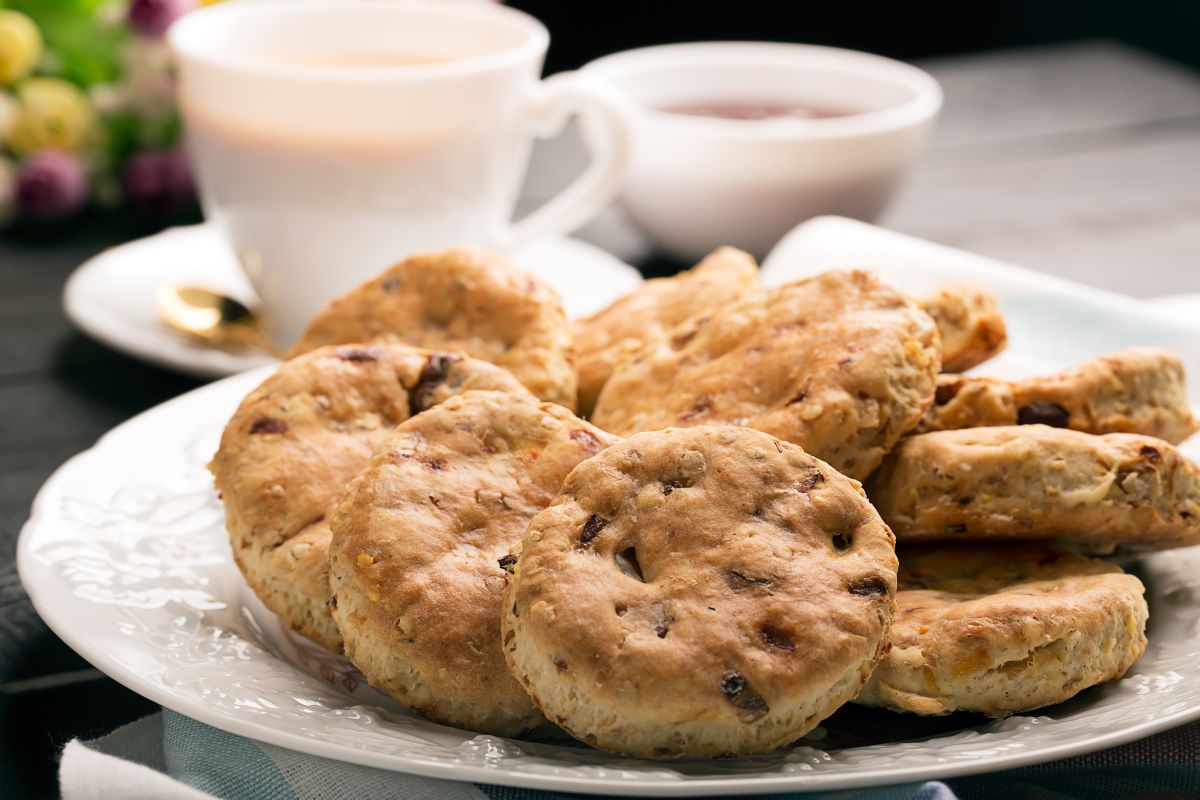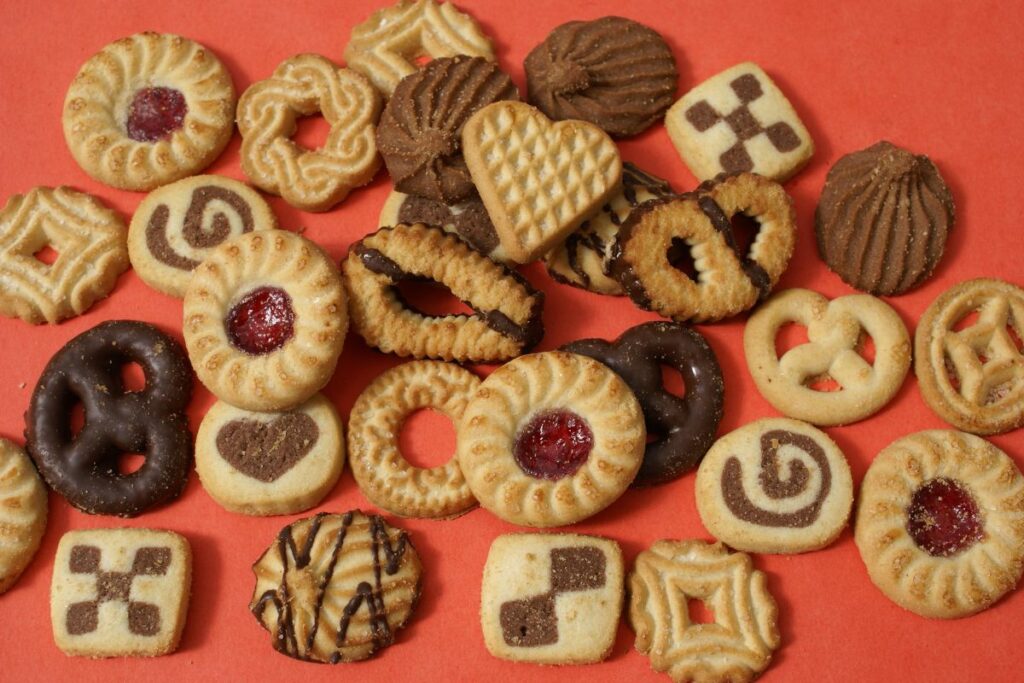A Tea-Time Treat – Exploring the World of Biscuiti Englezesti (English Biscuits)

When it comes to classic treats, there’s not much better than a delicious biscuit. And there is a certain type in the world of biscuits that warrants a second look. They bear the name biscuiti englezesti, or English biscuits.
These little beauties are not just for snacks and teatime. They are a wonderful tradition. They are a symbol of comfort. They are a backdrop for infinite flavors. So, here we are in the enchanting universe of biscuiti englezesti!
Table of Contents
ToggleA History Rooted in Tradition
The history of English biscuits is very interesting and long. Their origins can be traced for many centuries. The early versions were made from basic ingredients: flour, water and fat. Early examples of the biscuit were very hard. They were intended to provide energy for explorers and soldiers.
These recipes changed over time, with the addition of sugar, butter and other flavorings. This turned the biscuit from being an adaptable staple food into a more palatable indulgence. By the time of the Victorians, afternoon tea had become a national pastime in England. And with the hot cups came a selection of delicious biscuits.
A Bakery Bonanza: Varieties of Biscuiti Englezesti
That’s part of the charm of biscuiti englezesti: they can take so many different forms. There’s a biscuit to fit every taste and occasion. Here is a sampling:
- Shortbread is perhaps the stereotypical English biscuit. It tends to be somewhat crumbly with high fat content and a very rich, buttery taste. With only a handful of ingredients, it is a classic through and through.
- Hobnobs: They’re chunky oat biscuits. They’re a favorite of mine for their chewiness and mild sweetness. There are various flavors like classic plain and fruity flavors such as raisin and cranberry.
- Rich Tea: These lovely, pure, slightly sweet light biscuits are ideal for dunking in tea. Their tender texture and mild sugar taste makes them quite versatile.
- Digestive Biscuits: Wheaty biscuits for your digestion (hence the name!). They taste a little malty, with a satisfying crunch.
- Ginger Fingers: These little buggers have quite the kick. They’re in ground ginger. They’re great for people who like a little ’kick’ to their tea.
- Chocolate Dipped Biscuit: They look and taste good. They come in many forms. Some are dark or milk chocolate–dipped biscuits. Others are held together by a creamy chocolate filling.
These are just a few of the many delicious biscuiti englezesti which are on offer. There is a biscuit for every tastebud. They run the gamut from old-fashioned shortbread to more recent innovations.
Take It Up a Notch: Making Your Own Biscuiti Englezesti
But the silver lining is that you don’t have to go to England, UK to have biscuiti englezesti! And I promise these are fairly easy to bake at home!
Lots of recipes are available on the Internet or in cookbooks, and they’re all a little different from the original. The primary ingredients are generally flour, butter, sugar and eggs. From there, bring on the flavors, the spices, the textures.
The Perfect Combination: How Do You Eat Yours Biscuiti Englezesti

Naturally, the classic beverage to savor biscuiti englezesti is a cup of tea. A gentle dunk will just take the edge off the biscuit, providing some lovely crunch-resistance. It’s kind of like a tea and biscuit thing, but with warm tea and a sweet (or savory) biscuit.
But the biscuiti englezesti are adaptable. You can eat it on its own as a delicious snack. You can also crumble them on top of ice cream to make a delightful sundae. Or blitz them to sprinkle atop desserts.
Regional Variations:
- Scotland: Scotland is a domain of shortbread. But they have plenty to delight in as well, including oatcakes. Oatcakes are biscuits (cookies) made from oatmeal. They are commonly topped with cheese.
- Wales: The Welsh cake comes from Wales. It is a scone-shaped treat, which is flat and griddle-cooked. Sometimes it’s full of fruit or spices.
- Ireland: Ireland has a biscuit tradition, as well. It includes such staples as Irish potato bread – a soft, sweetish biscuit. It is simmered from mashed potatoes and commonly has butter and jam served with it.
Special Occasions:
- Christmas: There are tins of the biscuit for daaaaaaays at festive time. They have become a much loved tradition across Britain. Gingerbread men are popular. They’re simply cut out shortbread cookies. Rich tea biscuits with an icing on the tops are another popular choice of biscuit.
- Weddings: They tend to feature tender shortbread cookies. They come with icing and sprinkles as toppings. This is common in England.
Beyond Tea:
- Cheese Course: Some, like oatcakes and water biscuits, are the ideal vehicle for a pot of cheese. They provide a blank canvas for all sorts of tastes.
- Crumbles: And then English biscuits have a little bit of texture. Particularly digestives or hobnobs. Pulse them for a streusel to sprinkle over fruit crisps, crumbles, and buckles. That makes for a wonderfully contrasts in texture.
A Legacy of Yumminess: The Eternally Delightful Tradition of Biscuiti Englezesti
Biscuiti englezesti are cookies and so much more. They’re an icon of tradition, consolation and shared memories. You might be licking a plain shortbread dipped into tea. Or perhaps you are feeling more exotic. These little treats are a small taste of British culture. They’re also a brief moment of pure indulgence.
For a tasty snack or teatime treat, try biscuiti englezesti next time you’re in the mood for a bite. You may find your new favorite biscuit!
Bonus Tip: If you’re feeling adventurous, why not make your own biscuit recipe? Sprinkle with a little cinnamon, chopped nuts or orange zest. It could be anything!
Published by Carol Jones
My aim is to offer unique, useful, high-quality articles that our readers will love. Whether it is the latest trends, fashion, lifestyle, beauty , technology I offer it all View more posts







